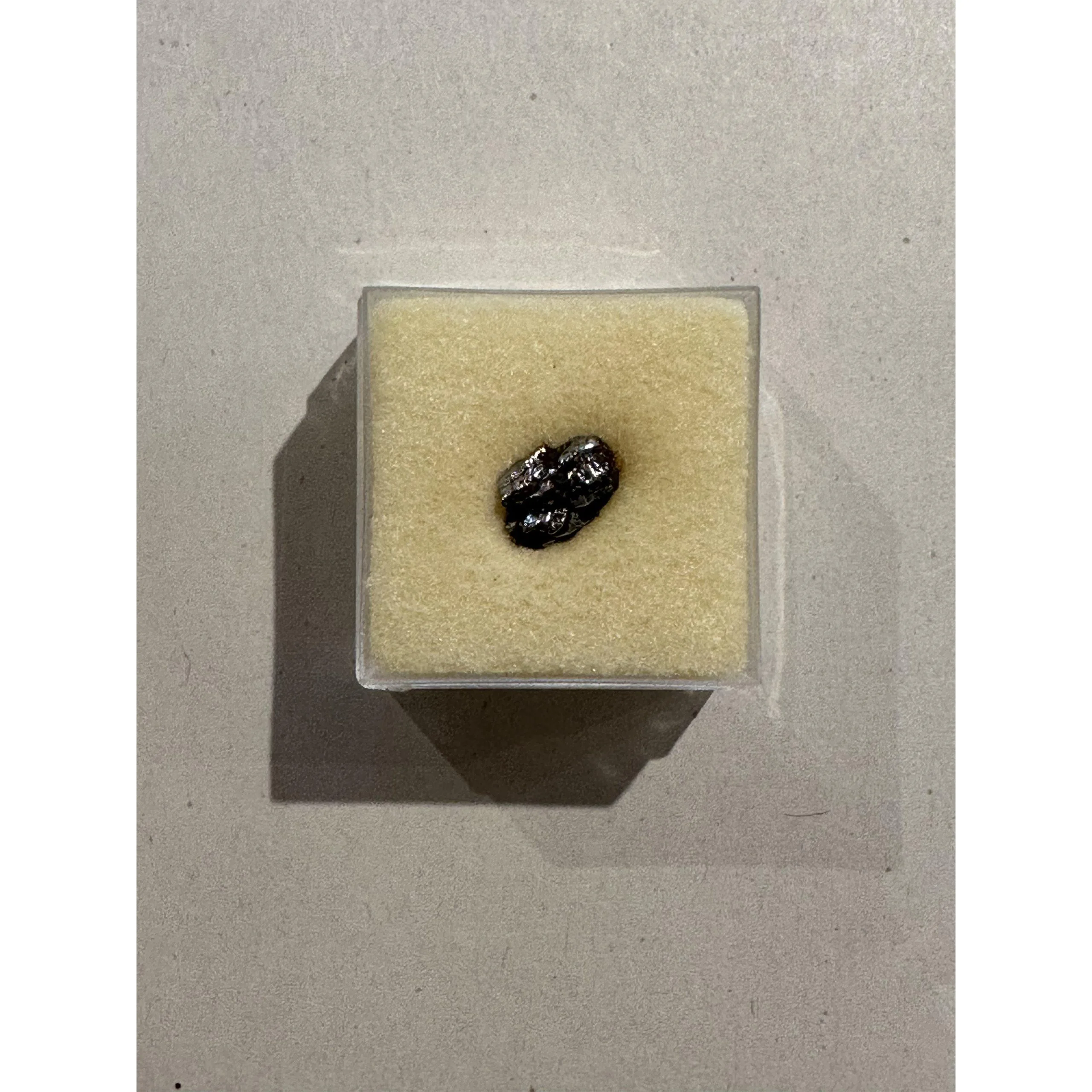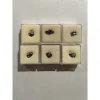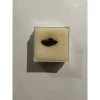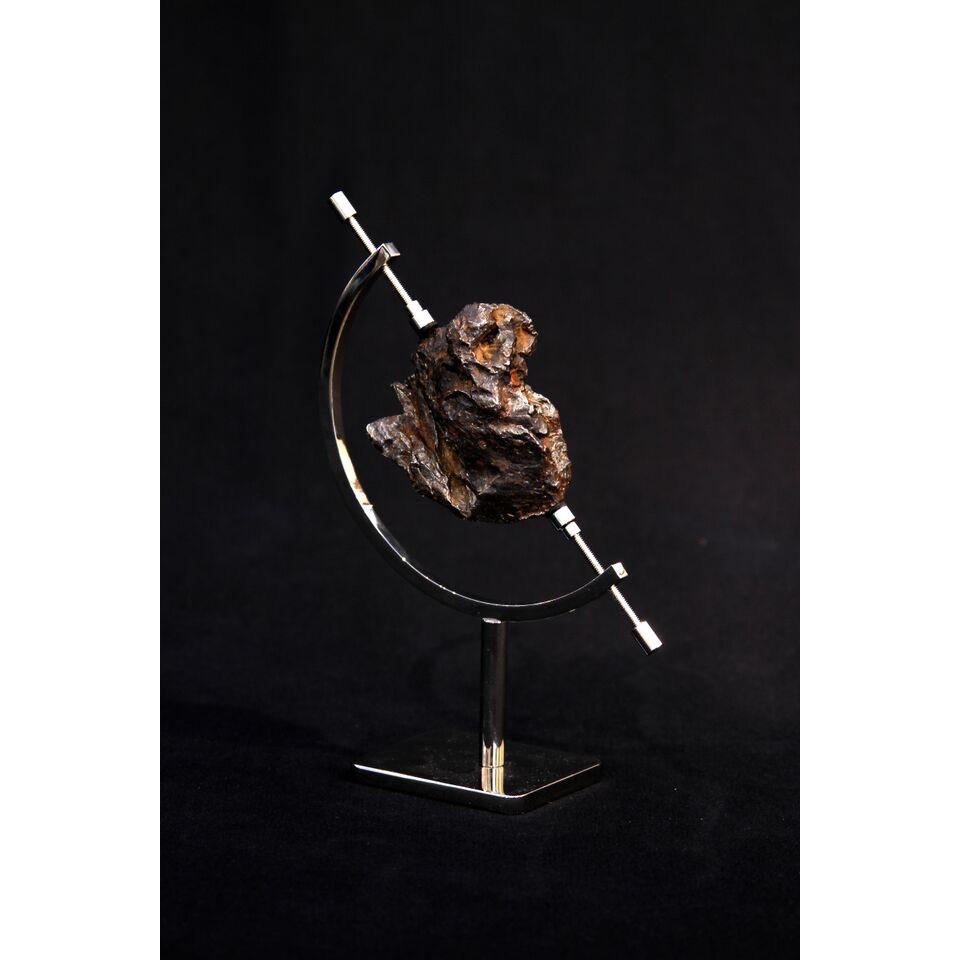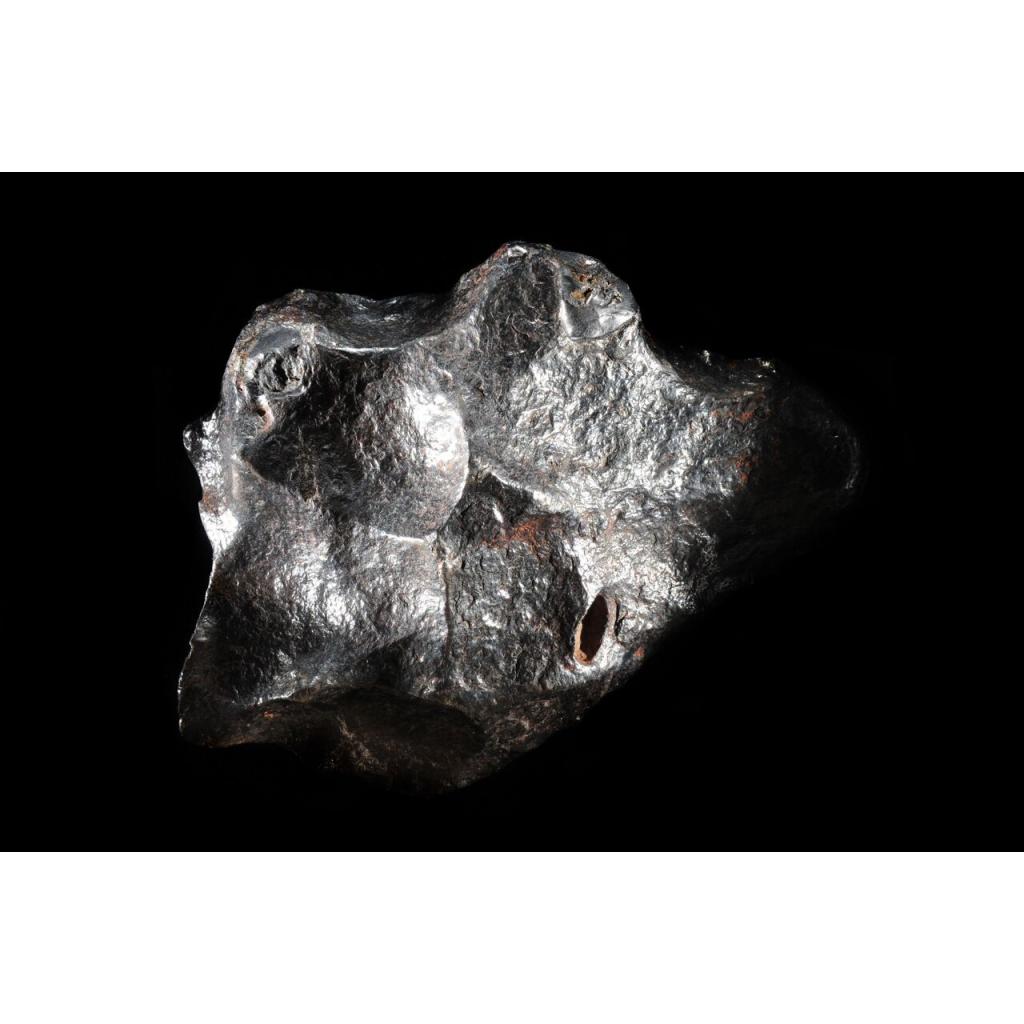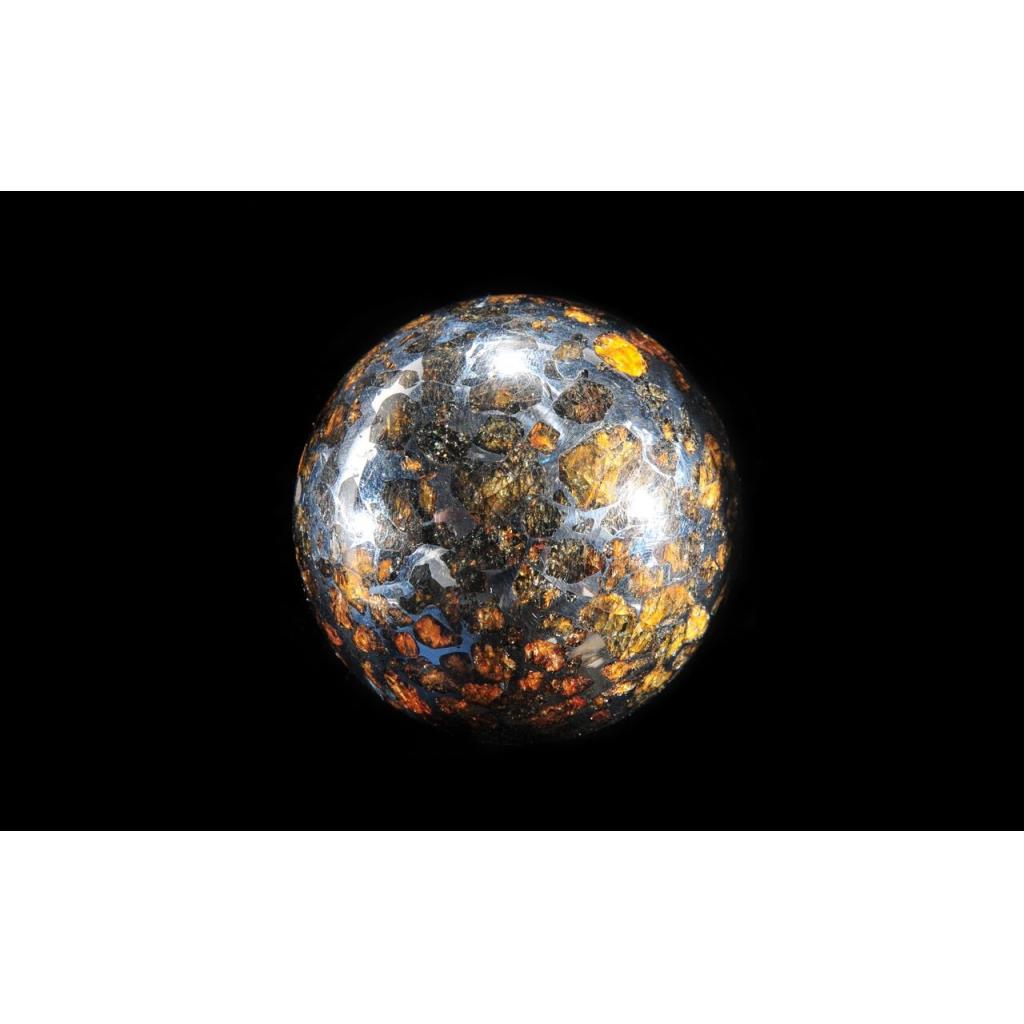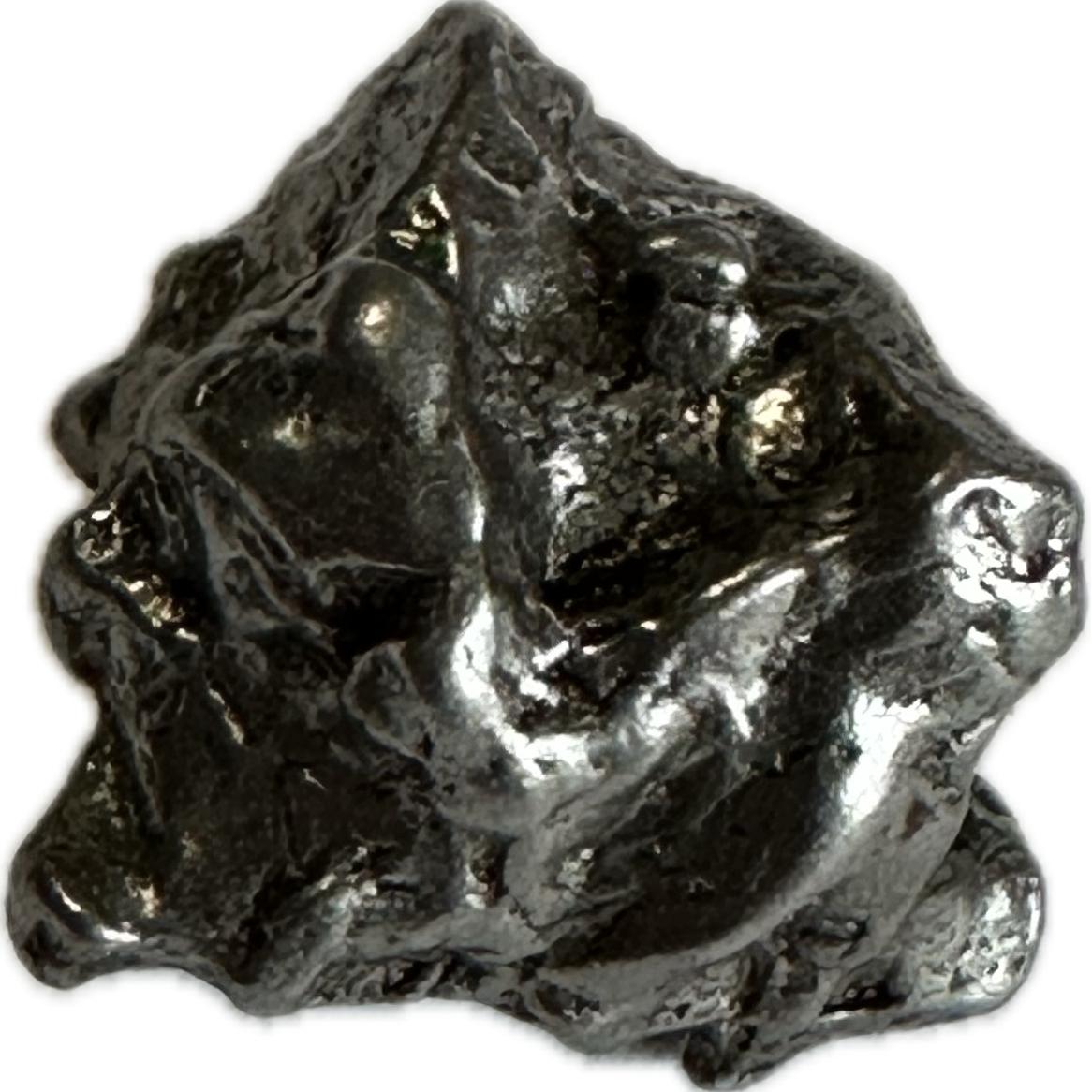Nickel Iron meteorite, Etched NanTan China. These metallic meteorites are magnetic and were found in the 1500’s in Nantan china.

Iron Meteorites: Relics of Cosmic Cores
Comprising about 5% of meteorite falls, iron meteorites stand out for their high iron and nickel content, often accompanied by traces of other elements like cobalt and phosphorus. These meteorites are remnants of the cores of differentiated bodies such as asteroids or protoplanets, where intense heat and pressure led to the segregation of metallic alloys.
Octahedrites: Characterized by a distinctive crystalline structure known as a Widmanstätten pattern, octahedrites are the most common type of iron meteorites. This pattern forms as a result of slow cooling over millions of years within the core of a planetary body, allowing nickel-iron crystals to grow into elongated shapes. The presence of the Widmanstätten pattern serves as a signature of extraterrestrial origin and provides insights into the cooling rates and thermal histories of parent bodies.
Hexahedrites: Unlike octahedrites, hexahedrites exhibit a cubic crystal structure and are relatively rare compared to their octahedral counterparts. These meteorites likely formed under different cooling conditions within the cores of larger asteroids or protoplanets. The study of hexahedrites helps scientists understand the diversity of parent bodies in the early solar system and the processes that governed their differentiation.
Ataxites: Ataxites represent a minor subclass of iron meteorites characterized by their high nickel content and lack of a distinct crystalline structure. These meteorites likely originated from the outer regions of planetary cores, where nickel concentrations were higher. The study of ataxites provides valuable information about the chemical composition and thermal evolution of parent bodies, offering clues about the conditions prevailing in the early solar system.
Stony-Iron Meteorites: Bridging the Divide
Stony-iron meteorites, as the name implies, represent a hybrid of stony and iron compositions, with roughly equal proportions of silicate minerals and metallic alloys. These meteorites are thought to originate from the boundary regions between a differentiated body’s mantle and core, where material mixing occurred due to impacts or geological processes.
Pallasites: Gem embedded Nickel Iron:
Pallasites: Pallasites are one of the most visually striking meteorite types, characterized by their beautiful olivine crystals embedded in a metallic matrix. These meteorites likely formed at the interface between the core and mantle of differentiated bodies, where molten metal percolated through fractures and filled cavities within the silicate matrix. The study of pallasites provides insights into the dynamics of core-mantle interactions and the mixing of materials in the early solar system.
Mesosiderites: Mesosiderites are stony-iron meteorites composed of roughly equal parts of silicate minerals and metallic alloys. Unlike pallasites, which exhibit a distinct separation of metal and silicate phases, mesosiderites show evidence of intense brecciation and mixing, indicating violent processes within the parent body. These meteorites likely originated from the crust or mantle of large differentiated bodies, where impacts or tectonic activity led to the commingling of materials.
Prehistoric 101 (Learn about fossils, minerals, and meteorites)
What is a Meteorite? Nickel Iron
What is a Meteorite?
The Meteoritical Society Database





